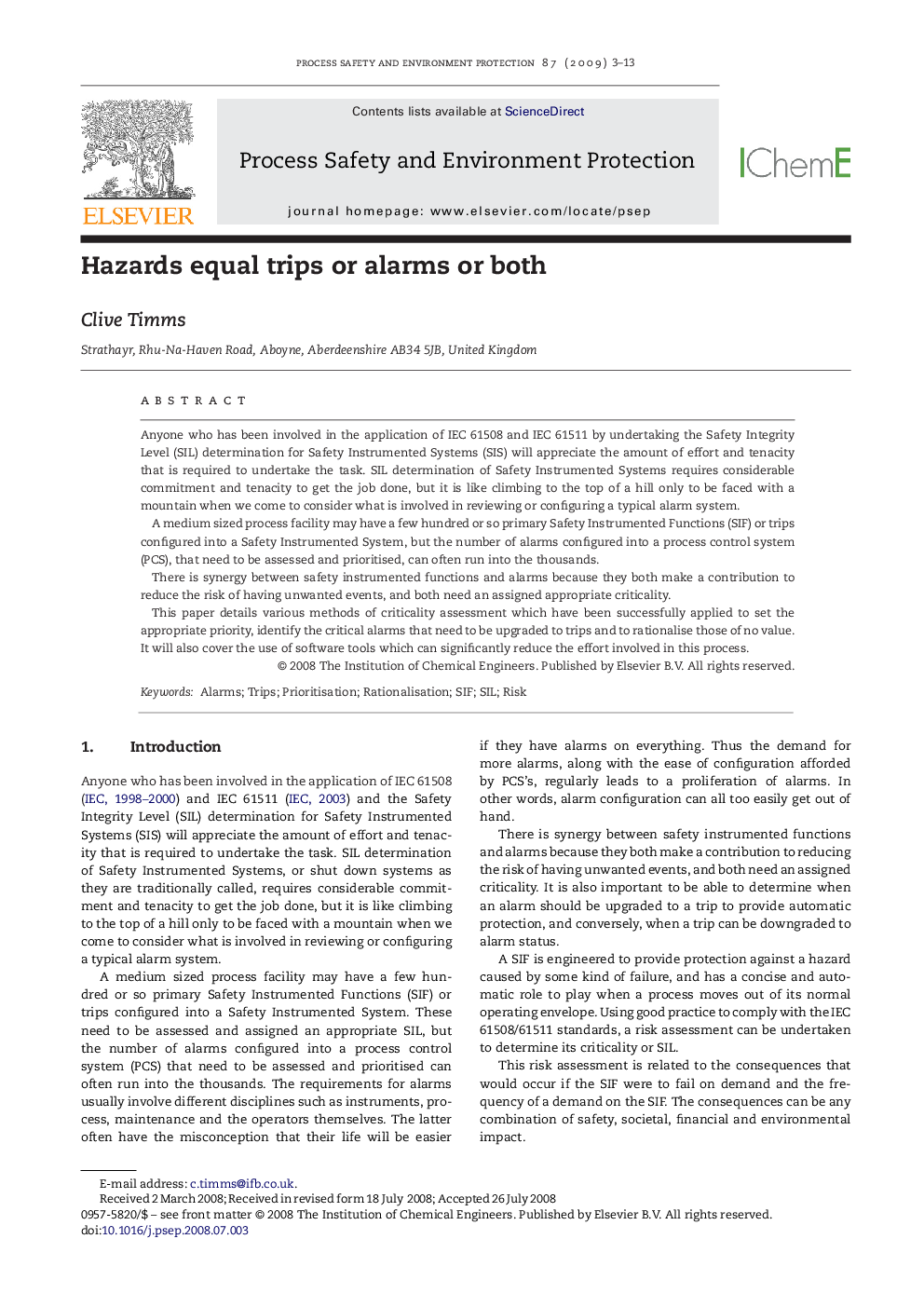| Article ID | Journal | Published Year | Pages | File Type |
|---|---|---|---|---|
| 588508 | Process Safety and Environmental Protection | 2009 | 11 Pages |
Anyone who has been involved in the application of IEC 61508 and IEC 61511 by undertaking the Safety Integrity Level (SIL) determination for Safety Instrumented Systems (SIS) will appreciate the amount of effort and tenacity that is required to undertake the task. SIL determination of Safety Instrumented Systems requires considerable commitment and tenacity to get the job done, but it is like climbing to the top of a hill only to be faced with a mountain when we come to consider what is involved in reviewing or configuring a typical alarm system.A medium sized process facility may have a few hundred or so primary Safety Instrumented Functions (SIF) or trips configured into a Safety Instrumented System, but the number of alarms configured into a process control system (PCS), that need to be assessed and prioritised, can often run into the thousands.There is synergy between safety instrumented functions and alarms because they both make a contribution to reduce the risk of having unwanted events, and both need an assigned appropriate criticality.This paper details various methods of criticality assessment which have been successfully applied to set the appropriate priority, identify the critical alarms that need to be upgraded to trips and to rationalise those of no value. It will also cover the use of software tools which can significantly reduce the effort involved in this process.
